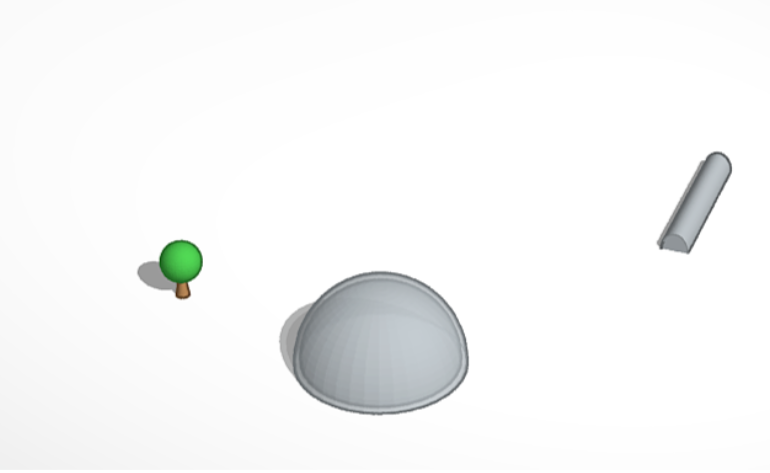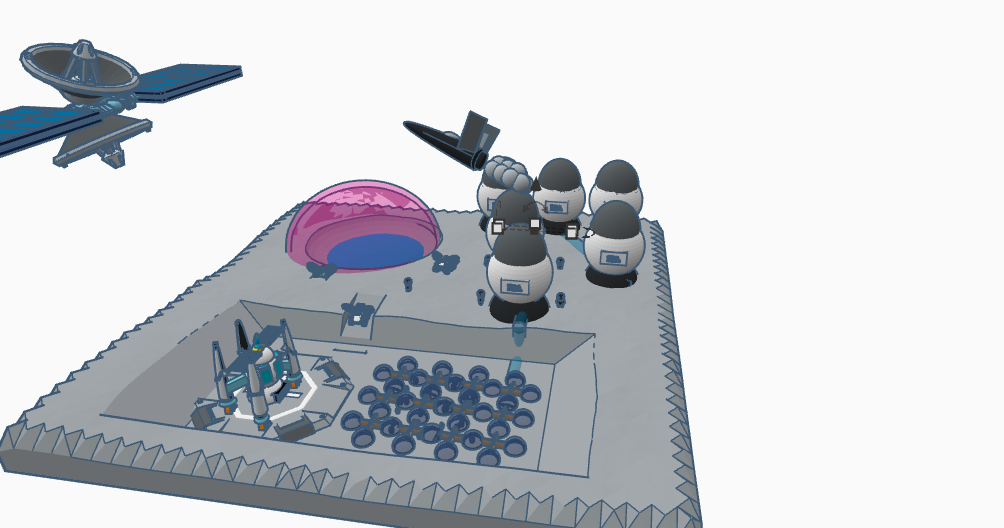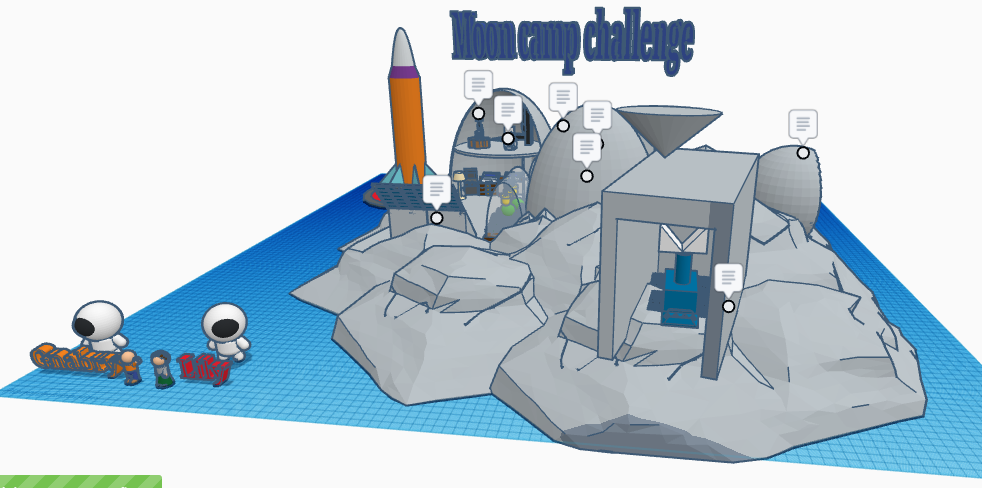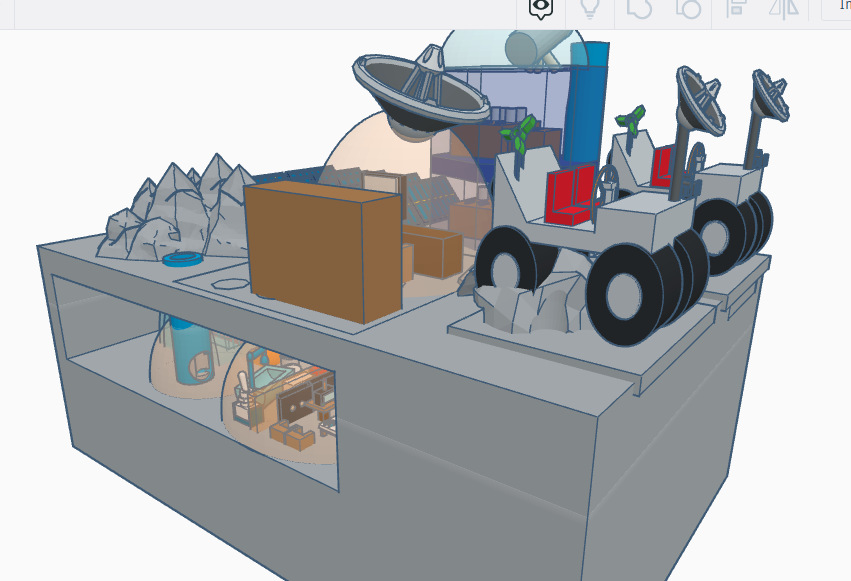Moon Camp Explorers Gallery 2021-2022
In Moon Camp Explorers each team’s mission is to 3D design a complete Moon Camp using Tinkercad. They also have to explain how they will use local resources, protect astronauts from the dangerous of space and describe the living and working facilities.
Team: MoonLight
Externato Marcelino Champagnat Lisbon Portugal 11 3 / 3
External link for 3d
|
Project description
In our moon camp, we have tried to bring the best to our astronauts. The camp has 8 rooms for 8 astronauts and 2 bathrooms, 1 for boys and 1 for girls. We planned to build a greenhouse to grow food and also to distribute different tasks to each of the astronauts living there. While ones are responsible for the cooking, others will be responsible for the greenhouse or the maintenance of the infrastructure. We will bring water and seeds of some plants from Earth. |
||||
|
Where do you want to build your Moon Camp?
Close to the lunar poles Why did you choose this location?
We chose this location because it offers good temperatures, between 50 and 0 degrees, for the astronauts who will live there, although there are some worries about protection against meteorites, solar flares and radiation. How do you plan to build your Mooncamp? Which materials will you use?
The materials we plan to use to build our camp are: |
||||
|
Water
|
Food
|
Electricity
|
Air
|
Protection
|
|
We would bring from the Earth, at least two litres of water (per person), which would be stored in a large water container. There would be a water filter which will clean our waste such as: sweat, urine… and make it good for reuse again and again. The debris from the filter will serve as fertilizer for the greenhouse soil. It has been discovered that there is ice water at the lunar poles. Consequently, we plan to extract it for consumption. |
We thought of growing food by bringing seeds from Earth that would be isolated in a greenhouse. Instead of sunlight, the greenhouse will have a heat lamp to simulate Earth days. There are some plants that are ready to harvest within fourteen days, for example seaweed. The plumbing will be done by an underground water container. The meat, on the other hand, will be made by a 3D printer using vegetables. |
One lunar day is equivalent to 14 Earth days. There are places at the poles where the sun is always shining. Fuel cells have been discovered that last 17 days in a row, these cells are like huge batteries. Therefore we will need solar panels to produce solar energy that will be stored in the aforementioned cells. |
The plants and algae produce oxygen, the algae are nice and small, we would need approximately 8 square metres per person. They will be produced in the greenhouse. Anyway, we need to bring some oxygen tanks. |
We propose the use of a sun “shield” made of polyethylene. Polyethylene can be moulded into any shape or form, and a shield only ten to twenty cm thick already provides sufficient protection against meteorites and radiation. The other shield competitor is water, but water cannot be compressed very much, so the water shield needs to be thicker to protect us. |
|
Describe a day on the Moon for one of your Moon Camp astronauts
First the astronaut wakes up, gets dressed and goes to the canteen where all astronauts have their vegetable based breakfast. He then goes to check every point of his lunar camp. Then he goes to the gym to train his physical fitness for health purposes. It is known that when astronauts return to Earth, they have to do physiotherapy to walk again. After a lunch of meat made from vegetables, he has a meeting with his colleagues to discuss researching ideas and new ways to improve the living on the moon. During the rest of the afternoon, he does some research. Before dinner, he takes a shower and, after, he falls asleep. |
||||







